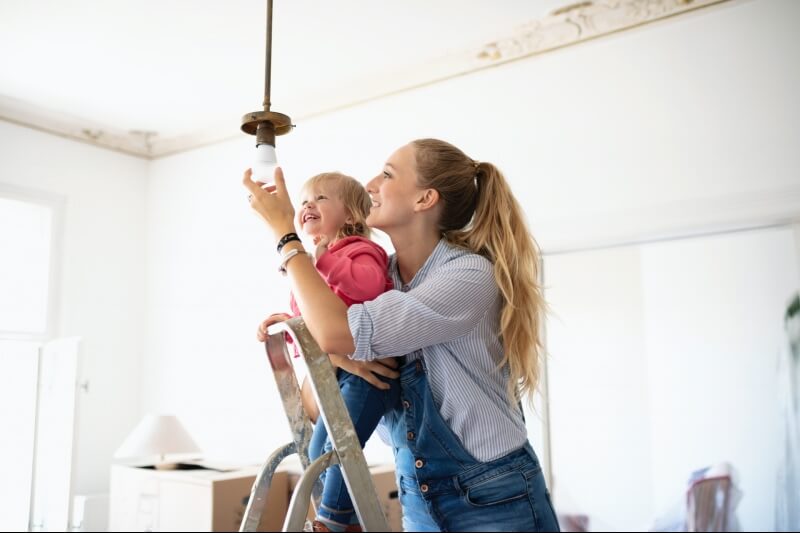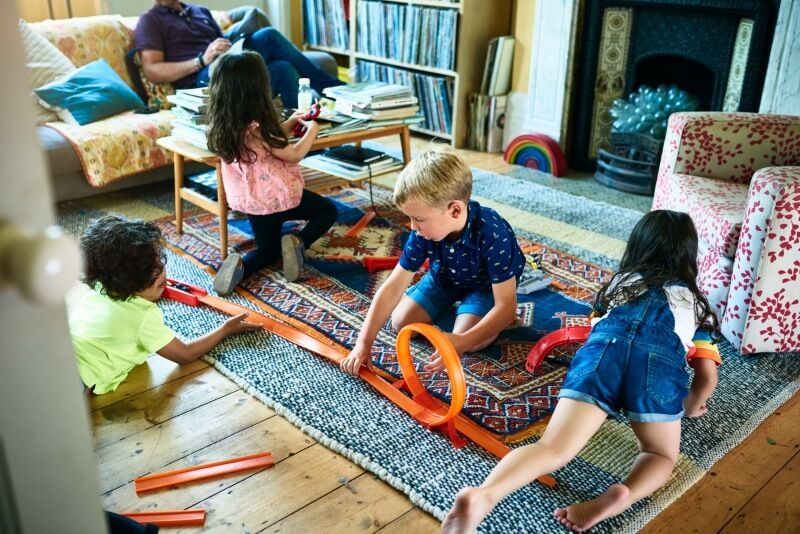A comprehensive guide to 95% mortgages

You might have seen this type of mortgage offered by different lenders. But what is it and who is it for?
What is a 95% mortgage?
With a 95% mortgage the lender provides you with a loan for 95% of a property value (or purchase price). Buy combining this loan with your 5% deposit, you’re then able to buy the property. As an example, for a home worth £300,000, you would put down 5% (£15,000) and you could borrow the rest (£285,000) from a lender to match the total purchase price.
For some, a 5% deposit could help you get on to the property ladder sooner than if you needed a larger deposit. However, a smaller deposit can also limit the choice of mortgage deals available.
How much can you borrow with a 95% mortgage?
With a 95% mortgage, you may be able to borrow up to 4-5 times your salary, or combined salary if you’re buying as a couple or with friend.
Can you get a 95% mortgage?
95% mortgage have been available to both first time buyers and existing homeowners, long term career or self employed. If you’ve saved your deposit, you’ll need to prove to your lender that you (and anyone you apply with) can meet the mortgage interest and repayments for your 95% mortgage. Lenders look at your salary and your debt and spending history in order to assess your suitability when you want to get a 95% mortgage.
Your lender will also need to be satisfied that you’ll still be able to afford your monthly interest and repayments if interests rates rise at any point in the future. Try the Money Saving Expert mortgage calculator to see how interest rate rises might impact your ability to meet your monthly mortgage payments.
Your lender will also look at your credit score as evidence of your ability to make repayments on your mortgage. This is so they can be confident that you can meet the repayments on your mortgage. If you failed to keep up repayments, your home may be repossessed. If you would like an idea of your credit score, Experian is one of many companies that allow you to check it for free.
To improve your credit score, clear or reduce existing debt and stay out of your overdraft for a sustained period before making an application.
Finally, if you’ve any doubts about whether a product is right for you, speak with an adviser who is authorised and regulated by the Financial Conduct Authority (FCA).

What are the options with a 5% deposit?
You should look at all the 95% mortgage deals on the market before making a decision. Your options include:
Fixed rate
The interest rate you’re charged is fixed for a pre-agreed amount of time (typically between two and five years). This can clarify matters and help you accurately budget for your monthly payments.
However, after the initial fixed-rate term ends, you’ll be put on a variable rate for the remainder of your period and you might find an early repayment charge may apply to you if you want to remortgage before the end of your fixed term.
Variable rate
The interest rate varies over the course of your deal. There are two types of variable rate product:
- Tracker: these are linked to the Bank of England ‘base rate’.
- Discount variable rate: the interest rate is set below your lender’s ‘Standard Variable Rate’ (SVR).
Cashback
The lender provides a one-off lump-sum payment to you as their new customer. This can seem attractive as it might help with the costs you incur as a result of moving and buying a new house.
However, cashback deals tend to come with higher interest rates. They may also come with higher fees and cost you more over the long-term.
Flexible
Some of the features of a flexible mortgage may include:
- Daily interest rates: interest is calculated daily instead of monthly or yearly.
- Overpayment: you can repay more each month.
- ‘Repayment holiday’: i.e. you can take a break from the mortgage for a set amount of time (typically one to six months).
- Underpayment: the ability to pay less than your usual monthly amount.
- Borrow back: you can borrow back the money from overpayments that you’ve made.
- Portability: you may be able to take the mortgage over to your new property.
- Droplock: the ability to switch your mortgage to a fixed rate, without early repayment charges or the need to remortgage with another lender.
Guarantor

The person who acts as the guarantor does not own a share in the property. Instead, they help a friend or family member onto the property ladder and sign a legal agreement confirming that:
- They’re responsible for your mortgage monthly repayments if you fall behind.
- They let the lender use either a property (such as their own home), or their savings (a lump sum held by the lender), as a security.
You can’t get a guarantor mortgage unless you can prove that both you and the guarantor have taken advice regarding its implications. This could be from a solicitor registered in England or Wales and/or a mortgage adviser or broker who is regulated by the FCA.
95% mortgages and the Help to Buy Equity Loan
A Help to Buy equity loan of up to 20% of the total value of the property (up to 40% in London) can be added to the deposit for certain new build properties.
Help to Buy equity loans are interest free for the first 5 years. However, an interest rate of 1.75% applies thereafter and increases every subsequent year in line with the Retail Price Index (RPI), plus an additional 1%.
95% Mortgages – the downsides
Yes, 95% mortgages can require a lower deposit and have therefore been a popular mortgage for first-time buyers, but there are some potential drawbacks you should consider:
Interest Rates
As your 95% mortgage is likely to have a higher Loan To Value (LTV) ratio, which is how much you’re borrowing compared to the value of the property (so a 95 LTV mortgage in this case), it’s likely to attract a higher interest rate (sometimes called 'mortgage rates') than if you had a mortgage with a larger deposit.
Remortgaging
Because you’ve begun with only a 5% deposit, you’re likely to have less equity in your home when it comes time to remortgage – this may restrict your options.
Negative Equity
Although the risk is not as great as it’s with a 100% mortgage, if your home falls in value you could end up in ‘negative equity’ – i.e. your home being worth less than the outstanding amount on your mortgage.

Finding the right 95% mortgage for you
With so many 95% mortgages on offer, it can be tough to find the lender and repayment rate that’s right for you.
Comparison sites are a useful place to begin, particularly if you're a first time buyer, as you can compare what mortgage deal might be for you. Most will ask you to confirm that you want to borrow up to 95 percent of a property’s value and ask a series of questions regarding your personal financial circumstances.
However, comparison sites don’t know your financial situation or credit history. This means that the quotes you receive when you compare mortgages may be different to what you’re offered on application.
What are the alternatives?
There are many other paths to affordable home ownership. These include:
Shared Ownership
With Shared Ownership (also called Part-Buy Part-Rent) you begin by buying between 25% and 75% of the property. Over time, you can buy more of the home through what’s known as ‘staircasing’.
You’ll typically need to put down a minimum deposit of 5%, which, combined with a mortgage, allows you to buy 25%-75% of the property. The remaining share in the home is typically owned by a housing association or private property developer, who you’ll pay rent to.
It’s important to note that Shared Ownership schemes are restricted to newly built homes and developments.

Wayhome
At Wayhome, you’re able to buy with a 5% deposit, and much like with Shared Ownership, it’s a Part-Buy Part-Rent system that allows you to buy more of your home over time.
However, when you buy through Wayhome there’s no mortgage or lending involved. Instead, Wayhome arranges a partnership between you and our funding-partners (big institutions like pensions funds) to buy the home together, in cash.
If you were to buy 5% of the home with your deposit, you would pay rent on the remaining 95% of the property. This rent then goes to the funding partner, who bought the majority of the home. Unlike Shared Ownership, any excess rent you pay each month goes towards building increased equity in your home.
But, if you’re looking to buy a new-build home then Wayhome probably might not be the best experience for you. This is because we’re only buying properties that have been bought and sold before, as we see them as a low-risk investment.
